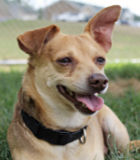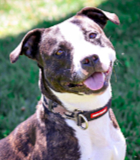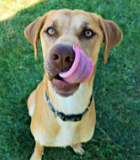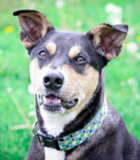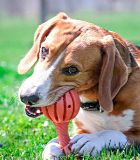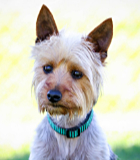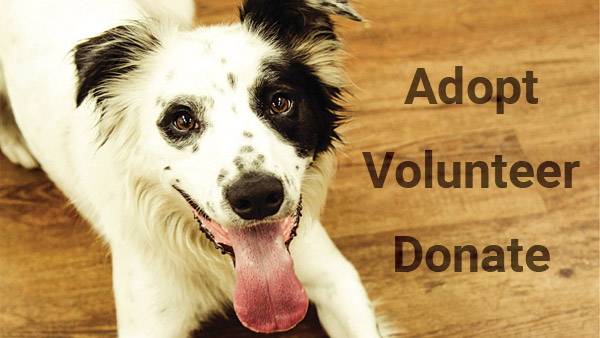Teaching Your Dog to ‘Leave It’
- This topic has 0 replies, 1 voice, and was last updated 13 years, 10 months ago by
Mackenzie’s Admin.
-
AuthorPosts
-
June 17, 2010 at 3:58 pm #536
Mackenzie’s Admin
Member“Leave it” is a phrase that you can use when you want your dog to leave something alone. After your dog learns what “Leave it” means, you can tell him to avoid things that might hurt him, such as trash or debris on the ground, or things that could get him into trouble in other ways, like unfriendly dogs or people who don’t want to meet him. Teaching your dog this skill can be useful in many situations and could even save his life.
How to Teach “Leave It”
The key to a reliable “Leave it” is to teach your dog that if he leaves something alone when you ask him to, he might score something even better!Step One: Get the Behavior
Sit down with your dog and show him that you have a treat tucked in your hand.Say “Leave it,” and then hold out your hand with the treat enclosed in your fist so that he can’t get it. Let your dog lick and sniff your closed hand. He may mouth, paw it or bark. Ignore all this, say and do nothing and just wait.
After several seconds, your dog will stop trying to get the treat. The instant he moves his head away from your fist, say “Yes!” Then immediately give him a treat from your other hand.
Repeat this sequence at least ten times until your dog visibly moves away from your closed fist as soon as you present it to him and say “Leave it.” Some dogs learn this in one session. Others will need more practice over a couple of days.Step Two: Increase the Difficulty
The next step is to teach your dog to look at you in order to earn the treat.1. Hold the treat in your hand, say “Leave it” and wait.
2. When your dog doesn’t hear “Yes!” he’ll probably look up at you. The instant he looks at you, say “Yes!” and offer the treat to him in your open palm.
3. Perform at least 40 more repetitions until your dog makes direct eye contact with you when he hears “Leave it.” He’s now learned that the way to get you to give him a treat is to look at you.
4. To perfect this behavior even more, you can delay your “Yes!” by a second or so at first so that your dog has to look up at you longer to earn the treat. Over many repetitions, gradually increase the delay until your dog will stare at you for as long as five to ten seconds before earning your “Yes!” and a treat.
Step Three: Practice on the Floor
The next step is to practice with the treat in plain view on the floor. At this stage, use so-so treats for the bait and higher-value treats for rewards. So you might place a piece of kibble or dry dog biscuit on the floor and use pieces of chicken or steak to reward your dog.Say “Leave it,” place the bait on the floor and then cover the bait with your hand. Just as you did before, wait until your dog stops trying to get at the bait.
The moment your dog looks at you, say “Yes!” remove the bait from the floor, and reward your dog with a really tasty treat from your other hand.
Repeat this exercise at least 40 times until your dog no longer tries to get the bait from the floor but just looks up at you instead.
Now say “Leave it,” place the bait on the floor and then hold your hand an inch or two above the bait. Repeat as above, gradually raising your hand higher over many practice repetitions. It’s important not to let your dog get the bait from the floor! Occasional mistakes happen, though, so if your dog does snatch the boring treat from the floor, say “Oh, too bad,” show him the tasty treat you had for him (you can let him sniff it) and toss it in the sink or eat it yourself! Please note that some dogs may become aggressive over food placed on the floor, as though once it’s on the floor, the dog “owns” it. If you suspect your dog might do this, consult a Certified Applied Animal Behaviorist (CAAB or ACAAB) or a board-certified veterinary behaviorist (Dip ACVB). Please see our article, Finding Professional Help, to locate one of these experts in your area. If you can’t find a behaviorist, you can hire a Certified Professional Dog Trainer (CPDT). Just be sure that the trainer is qualified to help you. Determine whether she or he has education and experience in treating aggression, since this expertise isn’t required for CPDT certification.
When your dog is successful at responding when you say “Leave it” with your hand about six inches above the bait, you’re ready to practice standing up. Put your dog on a leash and stand next to the bait. Tell him “Leave it,” and if he tries to snatch the bait, use your foot to cover it.
Wait for your dog to look at you and when he does, say “Yes!” and give him a tasty treat from your hand. With enough repetitions, you should be able to walk your dog up to and past baits on the floor and, when your dog hears “Leave it,” he should look up at you in anticipation of a really yummy treat. Be advised that if your dog is straining at the end of the leash to get at the bait, you need to repeat earlier training steps until your dog thoroughly understands that he should ignore what’s on the floor and look up at you instead.Step Four: Practice in the Real World
The final step is to practice your dog’s training in the real world. Eventually, you’ll want your dog to be able to respond to your “Leave it” cue when he sees all kinds of things he should leave alone, such as food dropped on the kitchen floor, spilled prescription drugs, dangerous objects on the sidewalk, your neighbor’s cat, etc. It’s not safe to practice with anything that might hurt your dog if he accidentally gets it, but you can practice with a variety of safe objects in many different situations and locations. Practice with food, toys, laundry, interesting objects around your house, tissues and other kinds of safe trash. Practice in all the rooms in your house, at your friends’ houses, in your yard and anywhere else you take your dog. It’s especially useful to practice when on walks:Place baits in obvious places along your walking route, and then take your dog for a walk.
As you approach a bait, point at it (if necessary), tell him to “Leave it” and keep walking. If he strains at the leash toward the bait, stop out of range of the bait, and wait for him to remember that he’s supposed to look at you.
When he looks at you, say “Yes!” and give a few tasty treats as you move along. Don’t worry that he didn’t respond to your “Leave it” the way you had hoped, and don’t discipline him. Just continue to practice with more bait laid in his path.
Once your dog is responding well when you say “Leave it” on your practice walks, he will likely respond in the same way when you come across real garbage. Always be prepared to reward your dog with praise and treats when he responds to the “Leave it” cue. Your dog will continue to improve as long as you help him practice and keep rewarding him for good behavior.Final Tips
Carry tasty treats on your walks in case you have to tell you dog to leave it at some point. If you don’t bring goodies, your dog will respond for a time but will soon learn that “Leave it” only works when he’s at home.Always try to make sure that your dog doesn’t get whatever you’re asking him to leave alone. You want him to think that when you say “Leave it,” he can NEVER get that thing.
Don’t practice “Leave it” with any object that would be dangerous for your dog to pick up or eat, just in case.
Try to make leave it feel like a fun game. If you say “Leave it” angrily, you could frighten your dog and slow down learning
To learn more about how to teach your dog new things, please see our article, Training Your Dog.
If you’d like help teaching your dog to “Leave it”—or if you’d like to learn how to train additional useful skills—consider contacting a Certified Professional Dog Trainer (CPDT) in your area. Many CPDTs offer private lessons and group obedience classes that focus on fun, effective training methods. Please see our article, Finding Professional Help, to locate a CPDT near you.
-
AuthorPosts
- You must be logged in to reply to this topic.



